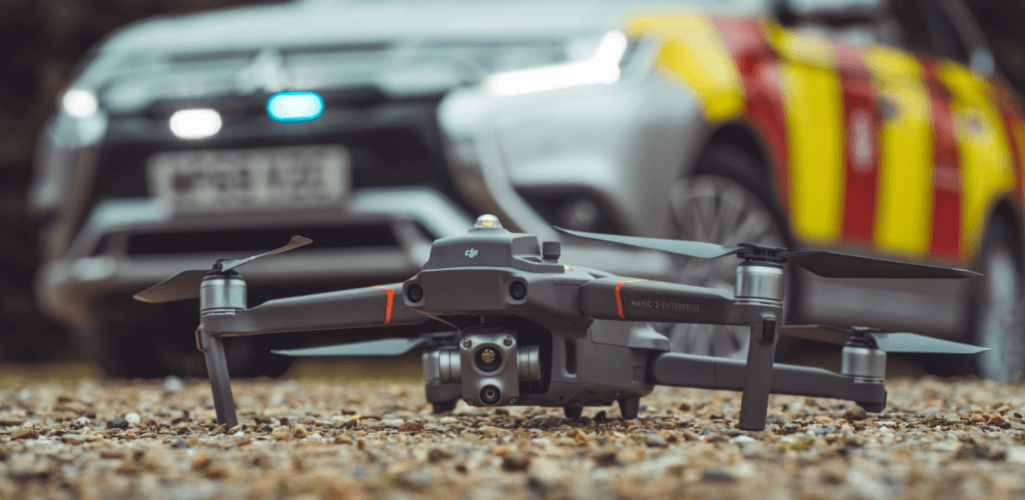
News
CAA Proposes Extension To Drone Provisions In Open Category
The UK CAA has launched a consultation, proposing to extend the Legacy and Transitional drone provisions in the Open category. An extension would be good news for drone operators, especially those flying Transitional aircraft in the A2 subc ... Read More

UK CAA consults on extending the length of Legacy and Transitional drone provisions in the Open category;
Extension would push date back from December 31, 2022;
CAA asking whether extension should be 12 months, 24 months, or longer - or not at all;
If approved, operators of current non-class-marked drones would be able to enjoy current provisions for longer - especially good for operators flying aircraft like the DJI Mavic 3 and Mavic 2 Series in the A2 subcategory with an A2 CofC.
The UK Civil Aviation Authority (CAA) has launched a consultation, proposing to extend Legacy and Transitional drone provisions in the Open category.
If approved, it would allow pilots flying non-class-marked drones to continue enjoying the benefits of the current rules for longer, beyond December 31, 2022.
This would be particularly beneficial for pilots of drones such as the DJI Mavic 3 and Mavic 2 Series, who, come the start of next year, would still be able to fly under Transitional provisions in the A2 subcategory with an A2 CofC, instead of under more stringent criteria of the A3 subcategory.
In turn, this would extend the longevity of current drones on the market, providing greater operational freedom for a longer length of time. You can find out more about UK drone laws in our in-depth guide.

The CAA has launched the consultation because it does not believe that the UK has in place the necessary infrastructure to move away from non-class marked UAS, to class marked UAS by January 1, 2023.
The proposal is to extend the Legacy and Transitional period, to allow time for the necessary steps to be taken by Government.
In its consultation document, the CAA is asking if the Legacy and Transitional drone provisions should be extended by 12 months, 24 months, or longer - or not at all.
The consultation can be found here. The deadline for submissions is Friday, May 13, 2022.
A final decision is expected in June 2022. If the proposed change is supported, the CAA says there will be an implementation period while it makes the necessary changes to legislation.

Interestingly, in March, EASA announced the European Union’s decision to extend the applicability dates of both Transitional and Legacy UAS under its own regulatory framework.
However, as the UK is no longer a member of the EU, there is no compulsion for the UK to automatically mirror what the EU or EASA does. But, the CAA does add that it 'may be useful to recognise that the EU have responded in this way in the face of similar practical challenges'.
Open Category Proposal Extension: How Will It Impact You
Under drone rules - which started in the UK and throughout Europe on December 31, 2020 - pilots of aircraft with new class markings (C0 to C4, based on certain criteria such as weight, speed and safety mechanisms) are able to benefit from less stringent operational requirements, such as reduced separation distances from uninvolved people.
However, because the standards for these class markings have not yet been set, there are currently no drones on the market with these ratings.
Therefore, a Transitional Period is currently running until the end of December 31, 2022. This allows certain operational freedoms for pilots of non-class-marked drones and gives manufacturers the chance to develop class-marked aircraft in accordance with the new standards.
These Transitional provisions allow the following within the Open category:
Subcategory | Class | Operating Area | Weight | DJI Drone Examples | Operating Date Limitations | Registration | Competency |
A1 | A1 Transitional | No intentional flight over uninvolved people | <500g flying weight | Not after December 31, 2022 | Yes | • User Manual • Online training • Online (foundation) test • A2 CofC, including theory test and self-practical training | |
A2 | A2 Transitional | No closer than 50m horizontally from uninvolved people | <2kg flying weight | Mavic 3; Air 2S; Mavic Air 2; Mavic 2 Series; Mavic 2 Enterprise Advanced; Phantom 4 Series, including Phantom 4 RTK | Not after December 31, 2022 | Yes | • User Manual • Online training • Online (foundation) test • A2 CofC, including theory test and self-practical training |
As things stand, non-class-marked drones - ie Transitional aircraft - will become 'legacy' aircraft at the end of the Transitional Period.
While this will not make current aircraft obsolete, it will restrict the majority of them to the A3 subcategory of the Open Category, come January 1, 2023.
Or to put it another way, flights conducted in the Open Category with non-class labelled drones will only be able to be conducted far from people and potentially congested areas. In fact, the operational criteria for drones flying in the A3 subcategory is:
No uninvolved people present within the area of flight. Maintain 50m separation from any uninvolved people.
No flight within 150m horizontally of residential, commercial, industrial or recreational areas.
An exception is the Mavic Mini, Mini 2 and Mini SE. As long as their standard flying weight remains under 250g, they can fly in the A1 subcategory indefinitely - ie, even after the Transitional period is over. Operators can fly over people (but not crowds), without needing an A2 CofC.
But if any of the DJI Mini series' flying weights exceed 250g - ie with the addition of accessories for instance - operators need to fly by the rules of the A1 Transitional (no intentional flight over uninvolved people) if they have an A2 CofC, or A3 subcategory (fly far from people) if they do not have an A2 CofC.

However, with the clock ticking, the CAA wants to extend the Transitional Period beyond December 31, 2022.
This would be great news for operators flying drones like the Mavic 3 and Mavic 2 in the A2 Subcategory with an A2 CofC. For instance, come January 1, 2023, they would still be able to fly up to 50m horizontally from uninvolved people, compared to far from people and key places of interest under the terms of the A3 subcategory.
To complement this, the CAA wants to extend the date for aircraft being deemed 'legacy'. This currently relates to any aircraft placed on the market before January 1, 2023, without a class marking, but an extension would push this date further into the future.
Have your say by responding to the consultation. Click to submit your feedback.
